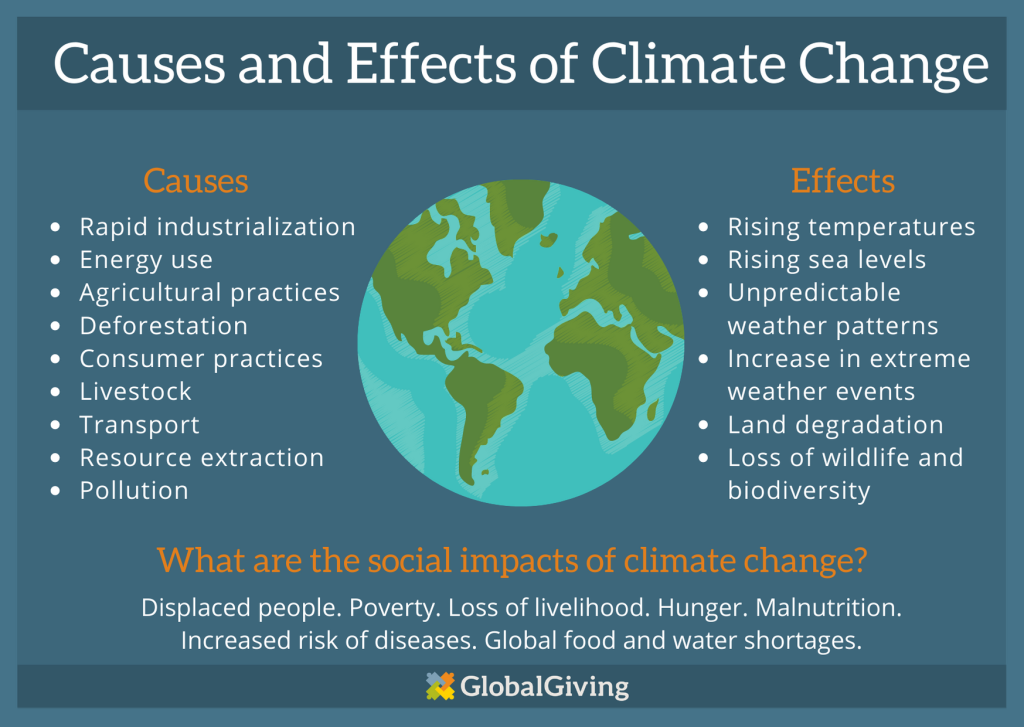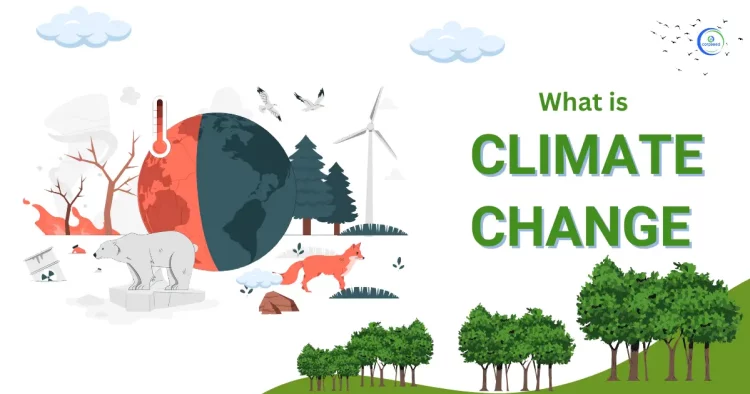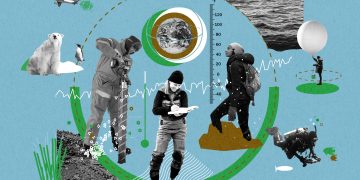Introduction: A Defining Moment for Innovation
Human history is marked by technological revolutions that reshaped societies: the agricultural revolution fed civilizations, the industrial revolution fueled growth, and the digital revolution connected billions.
Yet the climate crisis presents a paradox. Many of the innovations that powered progress—fossil-fueled engines, industrial agriculture, mass production—also accelerated global warming.
Today, the world stands at a pivotal moment. Technology is no longer just a driver of economic growth; it has become humanity’s most critical tool for survival. This article explores how cutting-edge technologies—from renewable energy to artificial intelligence—are helping to slow climate change, adapt to its impacts, and envision new pathways for sustainable development.
Part I: Energy Transitions – Powering a Carbon-Free Future
1.1 The Rise of Renewable Energy
The energy sector accounts for roughly 73% of global greenhouse gas emissions, making it the most critical arena for change.
- Solar and wind power have become the cheapest sources of new electricity in most regions, with prices dropping by more than 80% in a decade.
- Advances in offshore wind and next-generation photovoltaics expand renewable energy potential to previously unsuitable areas.
In Morocco, the Noor Ouarzazate Solar Complex now supplies clean electricity to millions, showing how emerging economies can leapfrog into the green energy era.
1.2 The Energy Storage Revolution
One of the main challenges with renewables is intermittency—sunlight and wind are not constant.
- Lithium-ion batteries have already revolutionized grid storage, but new technologies like solid-state batteries, flow batteries, and hydrogen storage promise longer duration and lower costs.
- Countries like Australia and Germany are integrating large-scale battery systems into national grids, stabilizing energy supply during peak demand.
1.3 Electrification of Transport
Transport contributes around 14% of global emissions. The shift to electric vehicles (EVs) is accelerating:
- EV sales surpassed 10 million units globally in 2023.
- Companies are investing in solid-state batteries to increase range and reduce charging time.
- Electrification is extending to heavy transport—electric buses, trucks, and even hybrid-electric aircraft.
In Norway, over 80% of new car sales are now electric, proving the feasibility of large-scale transition.
Part II: Smart Infrastructure and Climate-Resilient Cities
2.1 Cities as Frontlines of Climate Action
Urban areas generate over 70% of CO₂ emissions and are highly vulnerable to climate impacts such as floods and heatwaves.
2.2 Green and Smart Buildings
- Energy-efficient construction materials (cross-laminated timber, aerogels) reduce carbon footprints.
- Smart building systems, powered by the Internet of Things (IoT), optimize heating, cooling, and lighting based on real-time data.
- Singapore’s Marina One development integrates natural ventilation, solar energy, and green gardens to cut emissions.
2.3 Climate-Adaptive Urban Design
- Coastal cities like Rotterdam have built “water plazas” that serve as public spaces in dry weather but store floodwater during storms.
- Heat-prone cities in India deploy cool roofs—reflective materials that lower indoor temperatures and reduce energy consumption.
- Integrating green spaces, urban forests, and permeable pavements enhances both carbon capture and disaster resilience.
Part III: Carbon Removal and Geoengineering – A Double-Edged Sword
3.1 Nature-Based Solutions
- Reforestation and wetland restoration remain among the most cost-effective carbon sinks.
- Mangrove forests sequester up to four times more carbon than terrestrial forests while protecting coastal communities from storm surges.
3.2 Direct Air Capture (DAC) Technologies
- Companies like Climeworks in Switzerland and Carbon Engineering in Canada are developing machines that extract CO₂ directly from the atmosphere.
- Captured CO₂ can be stored underground or used in producing synthetic fuels.
- However, the technology is still expensive, costing $200–$600 per ton of CO₂ removed.
3.3 The Controversy of Solar Radiation Management (SRM)
- SRM techniques, such as injecting aerosols into the stratosphere to reflect sunlight, could theoretically reduce global temperatures.
- Yet these interventions carry risks: changes in rainfall patterns, regional weather disruption, and governance dilemmas about who decides to deploy such measures.
- Scientists emphasize SRM as a potential emergency measure, not a substitute for emission cuts.

Part IV: AI, Big Data, and Predictive Tools for a Warming Planet
4.1 Enhancing Climate Modeling
High-resolution climate models powered by supercomputers and AI algorithms enable scientists to predict localized impacts—such as monsoon shifts or glacier melt—with greater accuracy.
4.2 Optimizing Renewable Energy
AI helps utilities predict wind and solar output, balancing supply and demand. For example:
- Google’s DeepMind AI improved the energy output of wind farms by predicting wind speeds 36 hours in advance.
- Smart grids can automatically reroute electricity to minimize waste.
4.3 Transforming Agriculture
Climate change threatens global food production.
- AI-powered platforms help farmers decide when to plant or irrigate based on real-time weather and soil data.
- Precision agriculture reduces fertilizer and water use while maintaining yields.
- In India, AI-driven pest detection systems have increased harvest resilience.
4.4 Disaster Preparedness
Machine learning enhances early warning systems for hurricanes, floods, and wildfires, saving lives and reducing damages.
For instance, in Bangladesh, predictive models now give coastal residents more time to evacuate before cyclones.
Part V: Ethical and Governance Challenges
5.1 Avoiding Techno-Optimism
Relying solely on technology risks delaying difficult but necessary changes in consumption, policy, and behavior.
Emission reductions still require political will, global cooperation, and equitable resource distribution.
5.2 Bridging the Global Innovation Divide
Many developing countries face barriers—limited financing, lack of infrastructure, insufficient technical capacity—to adopting advanced solutions.
Global climate finance must prioritize technology transfer to avoid deepening inequalities.
5.3 Data Privacy and Social Justice
IoT systems and AI rely on vast amounts of data. Without safeguards, these tools could infringe on privacy or exclude marginalized communities.
Ethical innovation requires participatory governance and transparency.
Part VI: Inspiring Case Studies of Innovation
- Costa Rica’s Renewable Energy Model:
Achieved over 98% renewable electricity through hydropower, wind, and geothermal sources, proving national-scale decarbonization is possible. - China’s Solar Manufacturing Leadership:
Investments in large-scale production drastically lowered the global cost of solar panels. - Kenya’s M-KOPA Solar:
Provides pay-as-you-go solar kits to rural households, combining technology with financial inclusion. - Iceland’s CarbFix Project:
Captures CO₂ and stores it in basalt rock, turning emissions into stable minerals.
Conclusion: Harnessing Innovation for a Shared Future
Technology alone will not save us, but without it, the world cannot meet the Paris Agreement’s goals.
The task is to align human ingenuity with ecological limits—scaling up solutions that cut emissions, empowering communities to adapt, and ensuring that innovation is inclusive and just.
The climate crisis is often described as a threat multiplier, but it can also be an innovation catalyst. By reimagining energy, cities, food systems, and governance, humanity can transform a shared challenge into an opportunity for collective progress.
A century from now, future generations may look back and see the early 21st century as the moment when we chose to innovate not merely for profit or convenience but for survival and the planet we all share.

















































